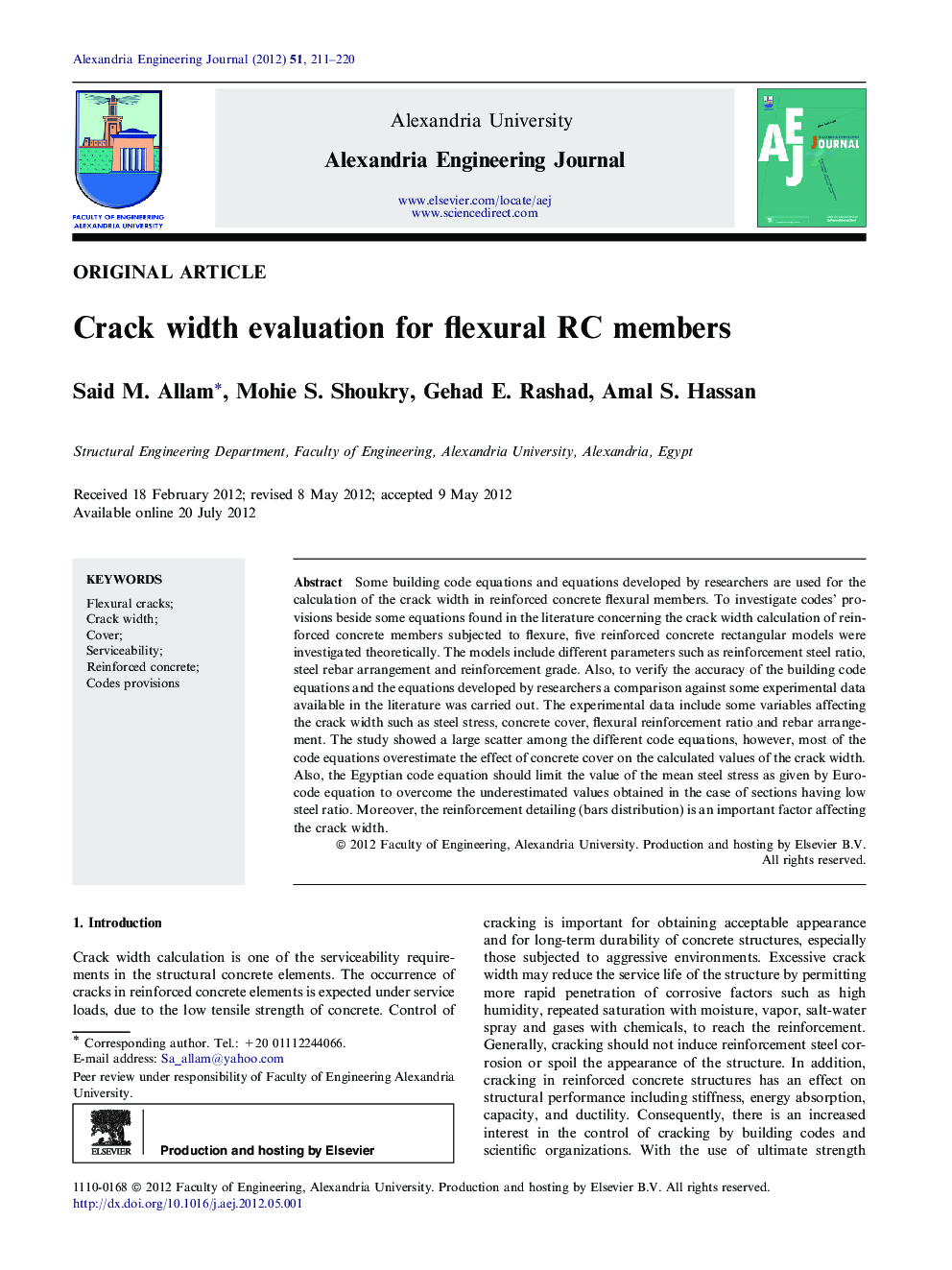| Article ID | Journal | Published Year | Pages | File Type |
|---|---|---|---|---|
| 816367 | Alexandria Engineering Journal | 2012 | 10 Pages |
Some building code equations and equations developed by researchers are used for the calculation of the crack width in reinforced concrete flexural members. To investigate codes’ provisions beside some equations found in the literature concerning the crack width calculation of reinforced concrete members subjected to flexure, five reinforced concrete rectangular models were investigated theoretically. The models include different parameters such as reinforcement steel ratio, steel rebar arrangement and reinforcement grade. Also, to verify the accuracy of the building code equations and the equations developed by researchers a comparison against some experimental data available in the literature was carried out. The experimental data include some variables affecting the crack width such as steel stress, concrete cover, flexural reinforcement ratio and rebar arrangement. The study showed a large scatter among the different code equations, however, most of the code equations overestimate the effect of concrete cover on the calculated values of the crack width. Also, the Egyptian code equation should limit the value of the mean steel stress as given by Eurocode equation to overcome the underestimated values obtained in the case of sections having low steel ratio. Moreover, the reinforcement detailing (bars distribution) is an important factor affecting the crack width.
